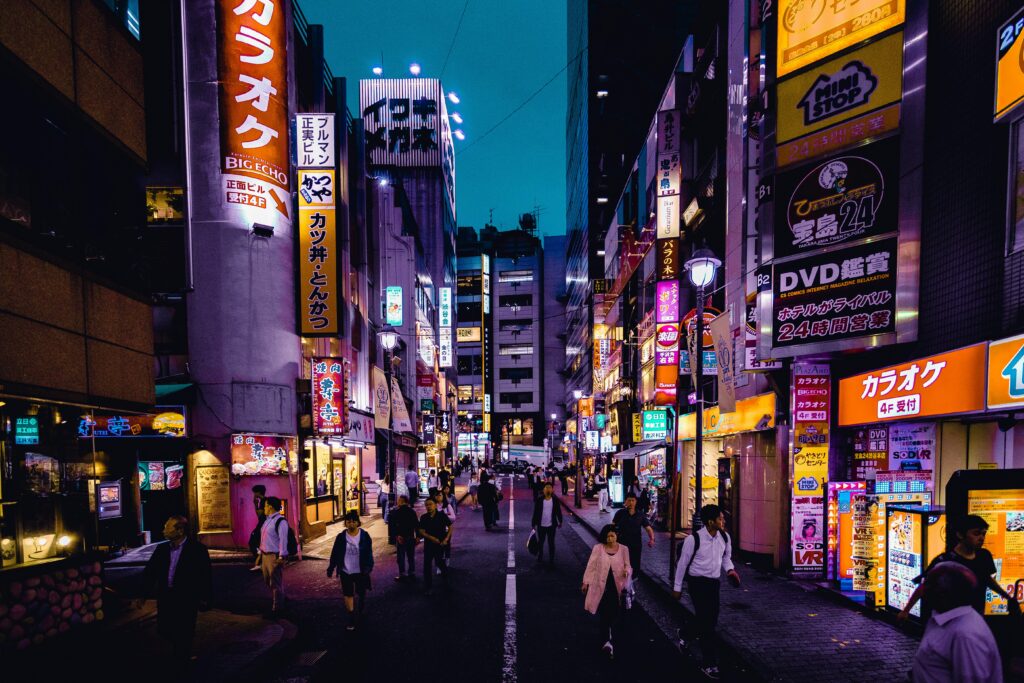Four Days of Discovery in Tokyo’s Urban Jungle

In 2015, I arrived in Tokyo with no concrete plans—just a desire to lose myself in the pulse of the city. I had four days and two of Tokyo’s most iconic districts—Shibuya and Shinjuku—waiting for me to explore, not as a tourist, but as someone seeking freedom from life’s constraints. I wanted to feel the rush of the unknown, to wander without a destination, and allow Tokyo to reveal itself to me in unexpected ways.
Day 1: Shibuya – The Rhythm of the Crossing
My first morning in Tokyo was a blur of excitement and jet lag. I found myself standing at Shibuya Crossing, often referred to as the busiest pedestrian intersection in the world. It felt like the city itself had a heartbeat, and with each signal change, the crossing pulsed with waves of people. For a moment, I stood still in the middle of it all, watching the world move around me in perfect chaos. There was something incredibly liberating about it—like I had stepped into a living, breathing organism.
Without a set path, I began to walk through the narrow streets behind Shibuya Station. I discovered tiny alleyways filled with izakayas (Japanese pubs), their warm, golden lights glowing against the evening sky. The aromas of grilled yakitori wafted through the air, and I couldn’t resist stopping at one of the small, family-run establishments. Sitting shoulder-to-shoulder with locals, I ordered skewers and sake, letting the city’s energy wash over me.
As night fell, I wandered deeper into Nonbei Yokocho—“Drunkard’s Alley,” a hidden gem filled with tiny bars that can barely fit five people. I slipped into one, where the bartender, an elderly man who had been running the place for decades, poured me a glass of shochu and shared stories of Tokyo’s history. The hours melted away, and as I left, I realized that Shibuya wasn’t just about the flashing lights and crowds—it was also about finding intimacy in unexpected corners.
Day 2: Shinjuku – Lost in Neon Dreams
The next day, I ventured into Shinjuku, Tokyo’s sleepless city within a city. Shinjuku is a maze of contradictions—towering skyscrapers and glowing billboards on one side, narrow alleyways and quiet shrines on the other. I felt an electric thrill as I walked through Kabukicho, the red-light district, with its dizzying array of neon lights and vibrant nightlife. It was like stepping into a surreal dreamscape where anything seemed possible.å
I continued to wander aimlessly, letting curiosity guide me. I found myself in Golden Gai, a collection of tiny, quirky bars crammed into six narrow streets. Each bar was like stepping into another world, with its own personality, music, and decor. Some played jazz, others blasted punk rock, while a few were filled with books or vintage memorabilia. It was a fascinating microcosm of Tokyo’s eclectic spirit.
As night fell, I drifted toward Omoide Yokocho, also known as “Memory Lane.” Here, the air was thick with the scent of grilled meat and the chatter of after-work salarymen enjoying their meals. I squeezed into a tiny yakitori stall and ordered a few skewers, savoring the food while listening to the conversations around me. The night stretched on, and I felt a deep sense of belonging—even though I was miles away from home.
Day 3: Shibuya’s Quiet Corners and Reflections
On my third day, I decided to explore Shibuya again, but this time I sought its quieter side. I stumbled upon Yoyogi Park, an expansive green oasis amidst the city’s concrete jungle. The park was alive with people enjoying picnics, musicians playing, and artists creating. I found a quiet bench under a canopy of trees and simply watched the world pass by.
Afterward, I visited the Meiji Shrine, a serene sanctuary dedicated to Emperor Meiji and Empress Shoken. Walking through the giant torii gates and into the forested grounds felt like stepping into a different time. The noise of the city faded into the background as I wandered the shrine’s paths, taking in the peaceful atmosphere. The contrast between the modern world of Shibuya and the spiritual calm of the shrine was profound, and it reminded me of Tokyo’s unique ability to balance the old and the new.
In the evening, I returned to Shibuya’s lively streets, but instead of seeking out the crowds, I found a cozy coffee shop overlooking the crossing. With a cup of matcha in hand, I watched the ebb and flow of people below, reflecting on the journey so far. There’s something magical about watching the world from above, detached yet connected.

No responses yet